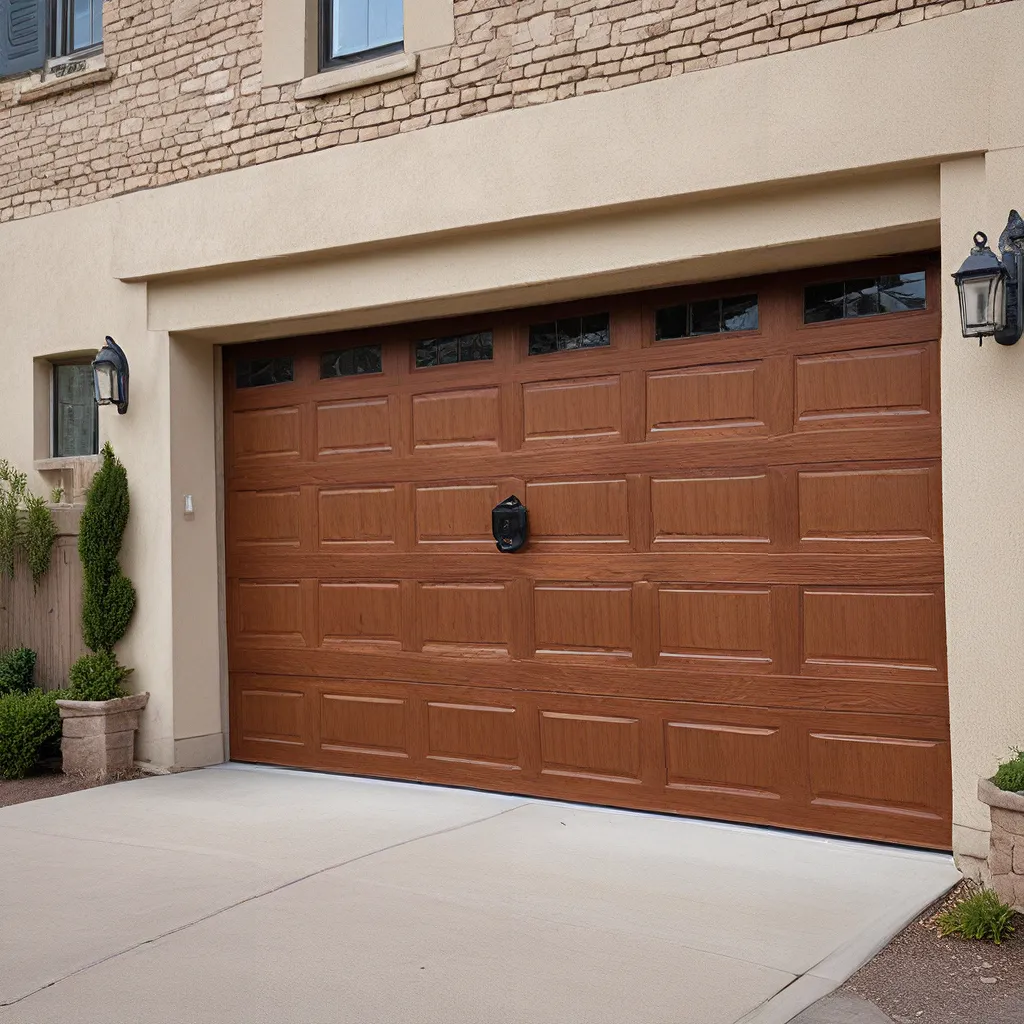
As a homeowner, few things can be as frustrating as a malfunctioning garage door. Whether it’s refusing to close or opening unexpectedly, a faulty garage door can pose a serious safety risk and disrupt your daily routines. One common culprit behind these issues? Problematic garage door sensors.
Understanding Garage Door Sensors
Garage door sensors, also known as photoelectric eyes or safety sensors, are a critical safety feature on modern garage doors. These sensors use an infrared beam to detect obstructions in the door’s path, automatically reversing the door’s direction to prevent damage or injury.
When the sensors are properly aligned and functioning correctly, they create an invisible infrared safety beam across the doorway. If this beam is interrupted by a person, pet, or object, the door will immediately stop closing and reverse direction to avoid a collision.
Common Garage Door Sensor Issues
While garage door sensors are designed to be reliable, they can encounter a variety of problems that can affect their performance. Some of the most common sensor-related issues include:
- Misalignment: If the sensors become misaligned, the safety beam can be disrupted, causing the door to refuse to close or reverse unexpectedly.
- Dirt or Obstruction: Dust, debris, or physical obstructions can interfere with the sensor’s ability to transmit and receive the infrared beam, leading to sensor malfunctions.
- Wiring Problems: Damaged, loose, or improperly connected wiring can disrupt the communication between the sensors and the garage door opener, causing sensor-related errors.
- Power Issues: If the sensors are not receiving the necessary power, they may not function correctly, resulting in safety concerns.
- Sensor Malfunction: Over time, the sensors themselves can wear out or fail, requiring replacement to restore proper operation.
Troubleshooting Garage Door Sensor Issues
If you’re experiencing problems with your garage door sensors, there are several steps you can take to diagnose and resolve the issue:
-
Check the Sensor Alignment: Visually inspect the sensors to ensure they are properly aligned and facing each other across the doorway. If they are misaligned, gently adjust them until the indicator lights are solid and steady.
-
Clean the Sensor Lenses: Use a soft, clean cloth to wipe away any dust, dirt, or debris that may be obstructing the sensor lenses. Avoid using abrasive cleaners or materials that could scratch the lenses.
-
Inspect the Sensor Wiring: Examine the wiring connecting the sensors to the garage door opener, looking for any loose, damaged, or improperly connected cables. Tighten any loose connections and replace any worn or frayed wiring.
-
Check the Power Supply: Ensure that the sensors are receiving the necessary power by verifying that the power indicator lights are illuminated. If the lights are off, check the circuit breaker or replace any faulty power sources.
-
Test the Sensors: With the door fully open, place an object in the path of the infrared beam and observe the door’s response. If the door does not immediately reverse direction, the sensors may need to be repaired or replaced.
Upgrading to Smart Garage Door Sensors
In addition to troubleshooting and maintaining traditional garage door sensors, homeowners may also consider upgrading to smart garage door sensors that offer enhanced features and connectivity.
Smart sensors, such as those offered by MYQ, integrate with smartphone apps and smart home systems to provide a range of additional benefits, including:
- Remote Monitoring and Control: Homeowners can check the status of their garage door and receive alerts about any issues, all from the convenience of their smartphone.
- Automated Scheduling: Smart sensors can be programmed to automatically open or close the garage door at specific times, reducing the risk of leaving the door open.
- Integration with Smart Home Devices: These sensors can be integrated with voice assistants, security systems, and other smart home technologies for a more seamless, connected living experience.
- Improved Safety and Reliability: Advanced smart sensors often feature enhanced safety features, such as advanced obstruction detection and remote diagnostics, to ensure optimal performance and protection.
Maintaining Garage Door Sensor Functionality
To keep your garage door sensors functioning properly and prevent future issues, it’s important to establish a regular maintenance routine. Here are some tips to help you maintain your garage door sensors:
- Visual Inspections: Regularly check the sensors for any signs of damage, misalignment, or obstructions, and address any issues promptly.
- Cleaning: Use a soft, clean cloth to gently wipe the sensor lenses, removing any dust or debris that may have accumulated.
- Sensor Testing: Periodically test the sensors by placing an object in the doorway and verifying that the door reverses direction as expected.
- Professional Maintenance: Consider scheduling annual or bi-annual professional inspections and tune-ups to ensure your garage door system, including the sensors, is operating at peak efficiency.
By staying proactive with garage door sensor maintenance and being prepared to troubleshoot any issues that arise, you can help ensure the continued safety, reliability, and functionality of your home’s garage door system.
Remember, if you encounter persistent or complex problems with your garage door sensors, it’s always best to consult with a professional door repair service for expert diagnosis and repair. Their specialized knowledge and tools can help restore your garage door to its optimal performance.


